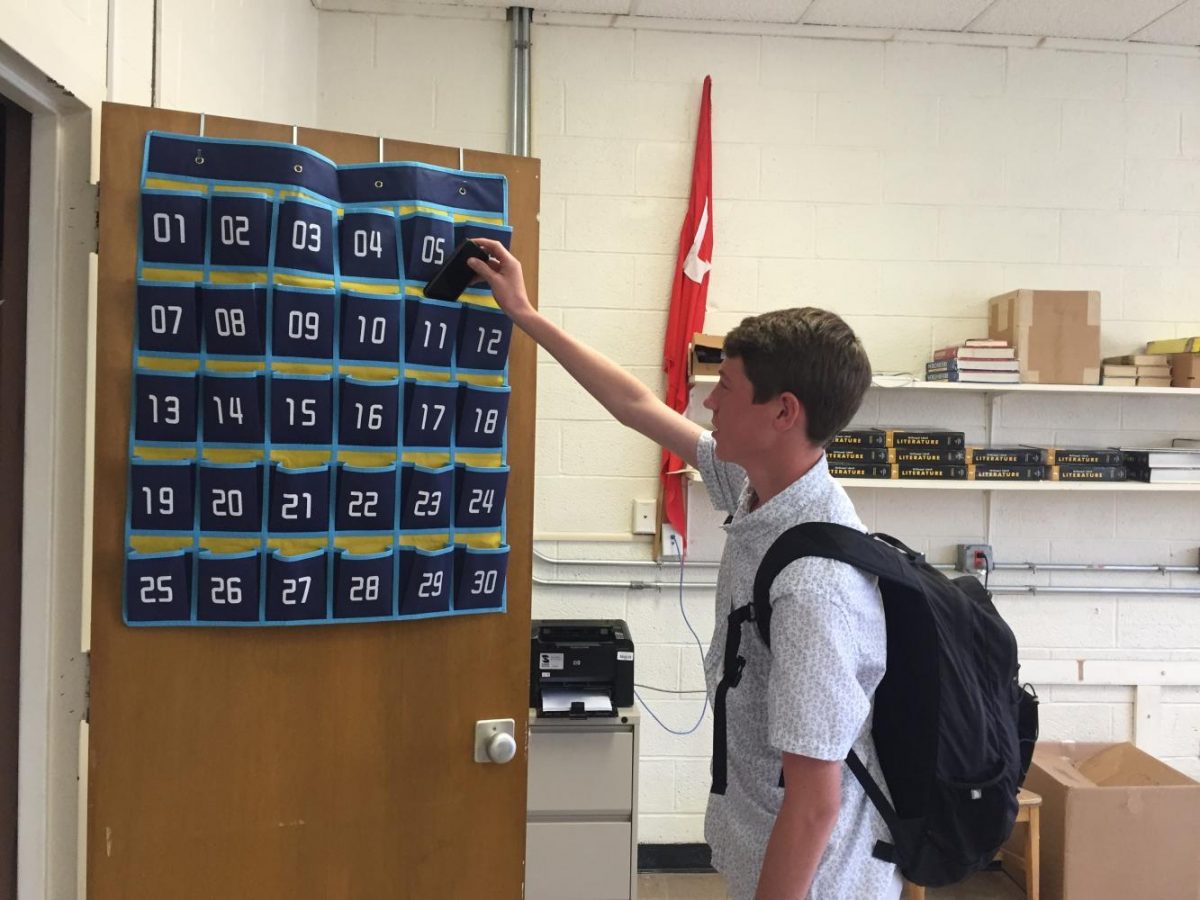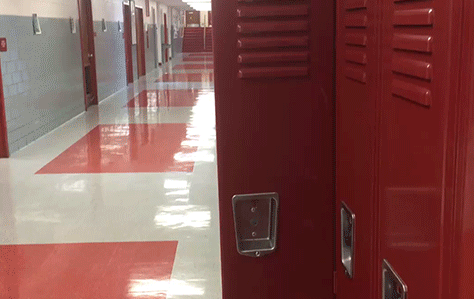New content filter implemented for school’s network
Photo Credit: Sophia Ferreri
Sophomore, Oscar Horwitz, reaches to retrieve his phone at the end of class.
October 1, 2017
Students waiting for their Snapchats to send should lose all hope.
A new content filter was implemented within the high school’s computer network this school year. The content filter categorizes websites differently than the high school’s previous filter and thus will block content that was not previously.
Following the implementation of the one-to-one laptop program, the administration felt it was necessary to block certain websites that could be a distraction to students in class.
“We generally start with a baseline set of filtering rules and alter them as needed,” Assistant Network Administrator Richard Santos said. “Staff may be filtered different from high school students who may have different access than elementary school students.”
The Glen Rock Board of Education approved the Internet Acceptable Use Policy, which all parents and students sign every year. The purpose of the policy is to outline the needs to maintain student safety, yet provide opportunities for students to do independent research.
The information technology department works with school administration to assess the educational viability of the material students are accessing using the school WiFi and devices.
A request can be made to the Helpdesk to unblock a particular site, and if deemed appropriate, websites can be cleared “rather quickly” according to Santos.
“The school administration is very open to student voice regarding applications they feel could enhance their education,” Assistant Principal Tina Barcolas said.
Some students still argue that even if an app doesn’t provide educational benefits, it doesn’t mean there isn’t an appropriate time for students to utilize the app. One student in particular, Allie Denenberg (‘18), believes that social media has its place.
“I don’t see the purpose of taking away Snapchat this year. It’s a great way to communicate with friends, which could be imperative to any student but especially seniors who make plans for lunch during passing time,” Denenberg said.
There are still teachers who remove cellphones during class time. In the back of several classrooms, there is a fabric wall with numbered pockets. Students are assigned a number that determines the pocket they put their phone in at the beginning of the period until the end of class.
The one-to-one program has caused other changes, including the paperless initiative and different types of lessons.




